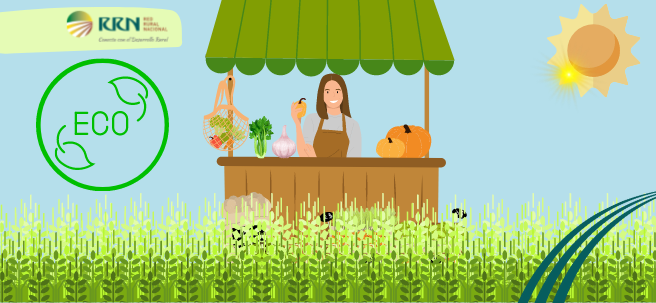
01 de April de 2022
Cambio climático y gestión de recursos naturales
- Spain has 2,437,891 hectares of organic land, which represents 10% of the useful agricultural land.
- The European Union calls for EU countries to reach 25% by 2030.
- Catalonia, Andalusia, the Valencian Community and the Balearic Islands are the regions with the highest percentages of agricultural land used for organic production.
The Spanish professional association for organic production, Ecovalia , has presented its 2022 annual report on organic production in Spain. It reflects growth in this sector, both in terms of the percentage of cultivated area and compared to market data, although the figures are still below the targets set by the European Union for 2030.
Thus, Spain has 2,437,891 hectares of organic land, representing 10% of the usable agricultural land. To reach the 25% target set by the European Union for 2030 , our country will need to increase the area by more than 4 million hectares in the coming years.
By autonomous community , the top three regions for usable organic agricultural land are: Catalonia, with 24.8%; followed by Andalusia, with 22%; and the Valencian Community and the Balearic Islands, both with 19.6%. Regarding market value , Spain reached €2.752 billion in consumer spending in 2021. Per capita spending in 2021 stood at around €59.20 per inhabitant/year.
In this case, to achieve the goals desired by the European Union, it would need to reach 7.5 billion, or, in other words, increase consumption of organic production by 10%.
Organic products and crops
The consumer's organic product basket in 2020 – according to official data from the Ministry of Agriculture, Fisheries and Food for 2021( “Analysis of the characterization and projection of organic production in Spain in 2020” ) – It has 57% organic products of plant origin and 43% of animal origin . What type of products are available in each category?
Organic plant origin:
17% - Vegetables, potatoes and legumes
9% - Fresh fruits
9% - Citrus
Animal origin eco:
13% - Meat and meat products
8% - Dairy and dairy products
3% - Eggs and egg products
Regarding the types of organic crops grown: citrus fruits (19%), banana and subtropical crops (16%) and nuts (16%) are those that have grown the most, although, in absolute terms, the majority continue to be olive groves (222,723 ha), cereals (216,624 ha) and nuts (196,941 ha).
The organic sector in Europe
The The 23rd edition of “The World of Organic Farming” , published by the Research Institute for Organic Agriculture ( FiBL) and IFOAM – Organics International , provides the most up-to-date overview of the sector in Europe.
Thus, in 2020, the European Union declared 14.9 million hectares under organic farming. With almost 2.5 million hectares, France has become the country with the largest agricultural area under organic management, followed by Spain (2.4 million hectares), Italy (2.1 million hectares), and Germany (1.7 million hectares).
Globally, European countries are the largest consumers of organic food. Denmark has the highest sales share worldwide, at 13.0% in 2020, followed by Austria with 11.3% and Switzerland with 10.3%.
For more information on this topic, see here .









